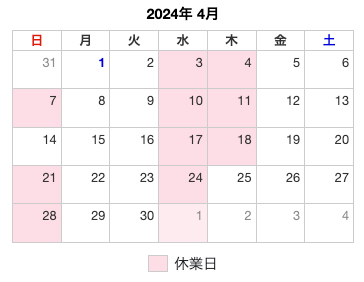The standard armpit surgery, the shearing method
Among the armpit surgery performed in Japan, the most standard and numerous surgery is the shearing method.The cause of body odor is that the indigenous bacteria on the skin break down the secretory substances from the apocrine sweat glands.A few centimeters of incision is made in one or two places in the center of the hairy part under the armpit where the apocrine sweat gland density that causes body odor is high, the skin is peeled off and inverted, and the apocrine sweat gland is exposed and actually visually observed. Then, while checking, remove it with surgical scissors.After removing the apocrine sweat glands, the method of firmly fixing with gauze so that the flaps engraft on the mother bed is the flow of the shearing method.
Effect
The part where the apocrine sweat glands can be removed by surely shearing like the skin of the armpit can be expected to be effective, but this surgical method requires a peeling technique of peeling the subcutaneous tissue from the skin.
It is difficult to remove the skin over a wide area for armpits such as the hem and areola...For this reason, the areas where treatment can be performed are limited.As for the armpit, only the part centered on the center can be exfoliated, and the skin cannot be sufficiently exfoliated around the armpit, that is, to the upper arm side or the trunk side.If the procedure is to exfoliate the skin over a wide area, hospitalization is required in principle, and in order to engraft the exfoliated skin on the mother bed, compression fixation is performed by a special method called double tie-over to fix the gauze, and long-term rest is required. It will be.
downtime
Postoperative downtime is long because the skin is incised and peeled off.It takes time for the blood flow to recirculate for the exfoliated skin to completely engraft on the mother bed.Strong compression fixation is required to prevent the exfoliated skin from floating and forming blood species.This is because if strong compression fixation is not performed, bleeding blood speciation may occur in the space, and the skin above the site where the blood seeds are formed may become blood flow insufficiency and cause skin necrosis.A minimum of XNUMX to XNUMX weeks of compression fixation is required.When fixing, the thread is firmly sewn on the skin and gauze to fix it, leaving ugly thread marks.The postoperative course of wounds is not always good.In many cases, the wound is completely healed and a lump of capsule called a cyst is formed shortly after the operation, and surgery is required to remove it.Therefore, it was a treatment in an era when there was no appropriate treatment other than surgery, and it is rarely performed now.It can be said that it is a treatment for body odor in the Showa era.The surgical scars of the shearing method are noticeable for several months, but after about half a year, the scars become less noticeable to some extent, and after several years, they become less noticeable.It is not the treatment of choice for those who absolutely dislike scarring.
Patients for whom the shearing method is indicated
Surgery is also an option if you want to expect a certain degree of certainty and permanent therapeutic effect with one treatment.Considering the risk of downtime, scars and various postoperative complications, it is not recommended due to its few advantages over current medical levels and other treatments.
However,Since the pruning method is covered by insurance, you can have surgery at an insurance medical institution with insurance.
The cost of treating body odor is relatively low and the financial burden is reduced.
However, in the case of outpatient surgeryExtensive shearing is difficult and risky, so it is inevitably ineffective. If you wish to receive a wide range of pruning methods that are highly effective, you will need to be hospitalized at a medical institution with a specialist who has an inpatient facility, undergo surgery, and perform resting and fixation for about XNUMX to XNUMX weeks.
Surgery in the hospital is physically and financially burdensome, and considering the cost of hospitalization, it is not always cheap because it is an insurance treatment compared to cosmetology treatment.
Why is the shearing method covered by insurance?
Axillary odor is a disease that should be treated and is covered by insurance.
In the early Showa period, there is a history of rough surgery such as cutting and removing armpit skin, which is called the excision method, at a surgical hospital.Later, a relatively minimally invasive shearing method was developed and covered by insurance.
What is the failure of the shearing method?
If you have surgery with an inexperienced doctor, not only will it not be effective, but the chances of complications will increase.
The cause of the failure isWhen the doctor's achievements / experience and skill level are low.
What is the recurrence with the shearing method?
The biggest cause of recurrence is the halfway removal of the sweat gland tissue that causes the odor.It is exhausted.
When skin grafting is done as thinly as possible, the same technique is required to scrape it.andExcessive use can lead to skin necrosis due to poor circulation and postoperative skin contracture, leaving ugly scars such as contracture scars and hypertrophic scars.
It is difficult to adjust, and surgery is always experienced and can handle postoperative care. You need to see a specialist.
Importance of choosing a clinic
It is necessary to have surgery by the attending physician who clearly knows the number of cases of axillary odor surgery and years of work experience.
You need to choose a surgeon, not a clinic. There are no specialists with experience in armpit surgery at major cosmetic surgery clinics or well-known clinics.
I'm a cosmetic surgeon, so I'm a plastic surgeon, so I'm not good at pruning...There are also plastic surgeons and cosmetologists who have never seen or experienced treatment for axillary odor.
Especially at major cosmetic surgery clinics, there are actually cases where the director who has never experienced armpit surgery is in charge of armpit surgery.
You should thoroughly check your doctor's medical expertise, experience, and treatment record before undergoing surgery.
The price of the shearing method?
Insurance medical treatment depends on the out-of-pocket rate of insurance.
The total amount depends on the number of hospital visits, the presence or absence of treatment, the presence or absence of drugs, and the presence or absence of complications.
Outpatient surgery costs for insurance medical treatment,
One armpit about XNUMX to XNUMX yen
Both armpits are about XNUMX to XNUMX yen.
At the cosmetic surgery clinic, you will have to pay for it, so it will range from XNUMX to XNUMX yen.
Scraping method FAQ
What is the postoperative pain?
The skin is exfoliated, but if it is firmly engrafted and bleeds and there is no speciation, there is no strong pain.
Anesthesia method?
A local anesthetic called xylocaine is used.It is a vasoconstrictor and is contained for the purpose of prolonging the anesthetic effect. Epilenamine-added xylocaine is locally injected to perform anesthesia.As a general rule, surgery with general anesthesia is not performed due to the risk.
downtime?
Since it is necessary to fix the wound with gauze and tape after the operation, it is necessary to rest for XNUMX days after the operation so that the armpit cannot be lifted at all. Everyday life is possible.If you are hospitalized, you will have XNUMX-XNUMX weeks of downtime.
Complications / risks after surgery?
The most common complication is speciation due to bleeding from the exfoliated site after surgery.If not treated immediately, skin necrosis on the bloodline will definitely occur.There is almost no infection in the surgical site, but some time after surgery, cysts such as epidermoid cysts, folliculitis, and seromas may develop at the surgical site.
Is the effect certain?
Unfortunately, despite the heavy physical burden, the odor does not disappear completely.The reason is that the apocrine sweat glands cannot be removed at all in areas where the skin cannot be exfoliated.
Age for surgery?
There are individual differences in the age at which the odor becomes a concern, but the earliest is from about XNUMX years old to the XNUMXth to XNUMXth grades of elementary school.It seems that girls often notice the odor earlier than boys.As a general rule, surgery should be performed after high school students who can be surely rested.



